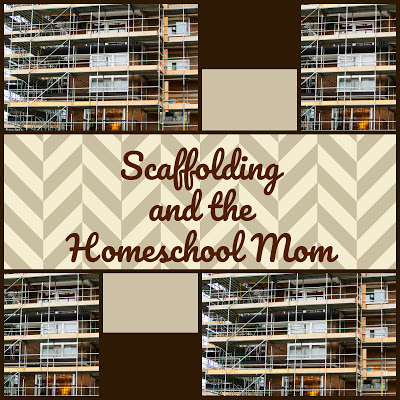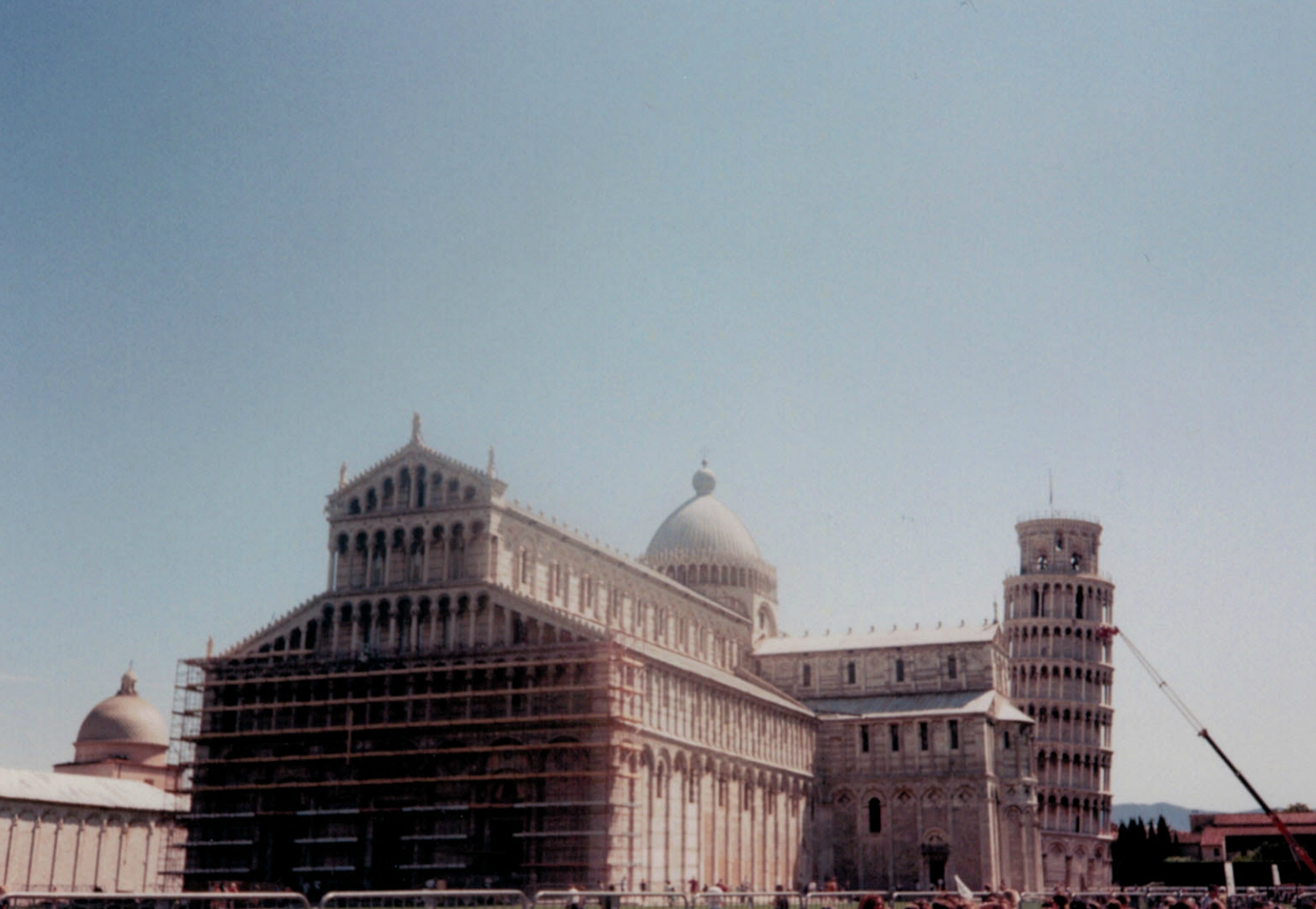Scaffolding and the Homeschool Mom
I don’t know where I first heard the term “scaffolding” as related to a Charlotte Mason style lesson. It was likely in an A Delectable Education podcast. I thought, “What a great metaphor.” I’ve since come to notice it a number of times and places including articles pre-dating the podcast. I’ve also seen a lot of confusion regarding what is scaffolding and how does it work in the homeschool. While “scaffolding” doesn’t seem to be a term Charlotte Mason herself used, it is a great picture of what makes a Charlotte Mason style lesson.
 In this series, I’m going to explore what scaffolding does and how it relates to educational lessons. I’d like to consider scaffolding from both the mom’s and the child’s perspective. I want to think about how to better scaffold lessons in my homeschool.
In this series, I’m going to explore what scaffolding does and how it relates to educational lessons. I’d like to consider scaffolding from both the mom’s and the child’s perspective. I want to think about how to better scaffold lessons in my homeschool.
Won’t you come along for the ride?
What is scaffolding?
The summer I was taken to Europe by my parents – almost 20 years ago, now – there was scaffolding on buildings everywhere. There was scaffolding on buildings both old and new. It stood around the exterior of buildings making wide, sure layers to walk upon. The scaffolding gave the workmen a place from which to do their work. Set firmly and levelly on the ground, the scaffolding tied onto the structure at differing points but was largely separate. It is secure to the building, yet easily removable when the work is finished. It ringed the exterior of buildings.
 |
| Pisa 1998 |
Scaffolding is made of metal frames: standard, ledger, and transom. These frames are set on firm base plates as a foundation. Sturdy boards are layered on the frames, level boards from which a worker can work in security; without fear. Often workers even ‘tie down’ to the frame for added safety. Because each level is -ahem- level, they are aided in making the courses of their work – concrete block, brick, stone, or wood – even and of high quality craftsmanship. This assures that the structure will remain beautiful and solid when the scaffold is removed.
Scaffolding is meant to be temporary. It is removed when the season of work – building, or cleaning, or repair – is complete. Scaffolding itself is not beautiful, but Michelangelo wouldn’t have produced beauty without it. That summer I traveled in Europe, the Sistine Chapel even had scaffolding within as the paintings were repaired and cleaned. That was a bummer for us, but it meant that future generations will have the opportunity to see its beauty without the scaffolds. The long run is something to be thankful for.
Scaffolding and the Homeschool
Homeschool Mama – as you think about your child’s childhood and education: YOU are building a scaffold.
- You provide safety and stability for your child’s thought life by providing a firm foundation: level, and plumb layers on which he can stand to build. Sometimes, it’s even draped with plastic or canvas for the worker’s further protection. Frankly, your child shouldn’t really notice the standard, ledger, and frame of the scaffolding. He shouldn’t notice the ties to the building. It should be transparent to him. Scaffolding Provides Safety in Transparent Fashion
- You provide a standard for his thought life by assuring that she is comfortable reaching out and adding to the building of her mind layer by layer. This is how her thinking becomes beautiful. While it should be transparent, the child should not doubt it’s support. The scaffold should be completely trustworthy to her. Scaffolding is a Trustworthy Standard
- You provide these things for a season. Scaffolding on the Pantheon or Sistine Chapel wasn’t going to last forever; your child should outgrow their need for your scaffolding (but not their own!) It is a temporary structure that lasts for a lesson or a childhood after which a child can build on their own. A Mother’s Scaffolding is Temporary … It’s for a Season.
“Therefore, teaching, talk and tale, however lucid or fascinating, effect nothing until self-activity be set up; that is, self-education is the only possible education; the rest is mere veneer laid on the surface of a child’s nature.”
 |
| Pisa 1998 … Who knew at the time that I’d want pictures with scaffolding some day … I cropped it from most of our trip. |
I plan to write, at the very least, a post on how scaffolding is safe and transparent, standard and trustworthy, seasonal and temporary. It’s not impossible that I’ll write more on the series, but this, at least, is where I intend to start. I’d love to hear your thoughts as we go along.
-
Scaffolding and the Homeschool Mom ← You Are Here
- Scaffolding is Discipline
- Scaffolding is Life
- Scaffolding in a Lesson
-
Scaffolding Under Conditions
-
Scaffolding Q&A

I'm excited to read this series! I've often read of people afraid to teach or instruct their children because they use CM or because they want to foster independent learning…. but I also know how easy it is to become preaching. balance is tricky.
love the illustrations of scaffolding! 🙂
Looking forward to this series, Dawn. I think scaffolding is one of the most overlooked part of a CM eduction, yet it affects every subject we teach as well as narration, lessons building on each other, etc. And even more overlooked it affects most aspects of daily life. How to use a check list, how to start our day well, how to use free time properly, and so on. We want our children to be independent learners and thinkers and even just with management of themselves, yet often we can totally forget that does not come naturally just because they get older. I'm excited to hear how you are walking this out in your home. If nothing else, I think we can all use the encouragement to not let this area fall through the cracks.
Hey, I was in Italy in 1998 too! We were mainly in Florence, Venice, and Siena. The main place I remember scaffolding during that trip was at the Cathedral of San Marco in Venice – I remember it was really hard to see much of anything there. But anyway…
Great idea for a series, I'm looking forward to it! One of the ways I've thought a lot about scaffolding is in making sure subjects or practices are learned in an appropriate order. I've really noticed this in music. I first heard about sol-fa a couple years ago and it seemed like it would be a good thing to do in our homeschool. It was really challenging for the kids and we didn't really get anywhere even though we were doing it regularly for months. As I did more research, I realized my kids were missing a firm grounding in basic ear training and rhythm. I spent last year working on these foundational skills, and now we're in a much better place to be working on sol-fa and more advanced music subjects.
This is a concept that is pretty new to me–both in terms of architecture and education. I look forward to reading more about it. 🙂